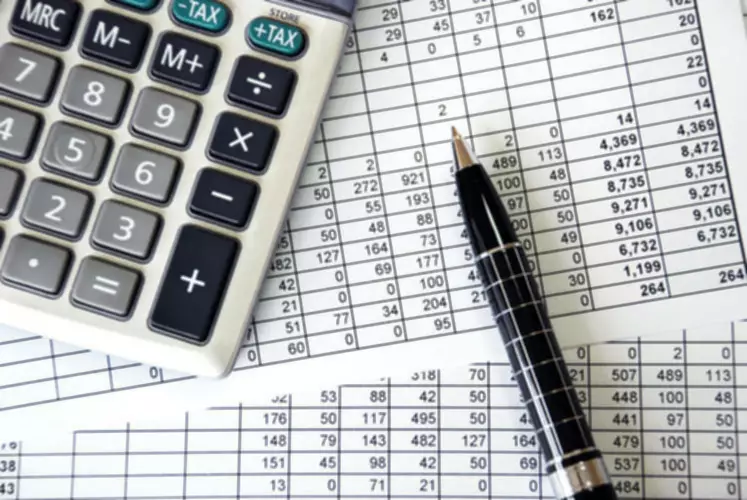Content
Consumer packaged goods is an industry term for merchandise that customers use up and replace on a frequent basis. Examples of consumer packaged goods include food, beverages, cosmetics, and cleaning products.
- The dividends per share distributed have been steadily increasing year by year stopping at 2.7$ in 2017.
- The top FMCG companies include Procter & Gamble, Johnson & Johnson, Nestle, Unilever, JBS, L’Oréal along with beverage companies like Coca Cola, Pepsi etc.
- GEP SMART is an AI-powered, cloud-native source-to-pay platform for direct and indirect procurement.
- Also moving the financial needle included PepsiCo’s acquisition of Be & Cheery, one of the largest online snacks companies in China.
- The businesses that I see excelling in this area are those that “listen” to consumers.
Consumers in rural areas typically purchase goods from nearby towns and villages. Recently, there has been a shift in consumer purchase behavior toward purchasing locally that has prompted the need for better local promotional efforts to generate brand awareness in small towns.
Supply Chain Management
Because consumer packaged goods are purchased so often, they’re packaged and shipped in large quantities. There’s a high demand for specific items, like food, beverages, and beauty products. Consumer packaged goods are items used daily by average consumers that require routine replacement or replenishment, such as food, beverages, clothes, tobacco, makeup, and household products. CPG companies need to shift their focus from “selling” consumers to providing experiences they love. Today’s shoppers are making purchasing decisions based on the value the product will contribute to their quality of life. The most effective way to engage consumers is not to tout the product, but rather the focus on the outcomes it will produce. Issues of sustainability, with an emphasis on operational efficiency and packaging, have also proven to be a challenge for the CPG industry.
What is a CPG company?
Consumer packaged goods, or CPG, refers to the space within an industry that features goods that consumers use in everyday life. These goods are produced on a large scale and generally have a short lifespan. CPG companies sell their goods to retailers, which in turn sell to consumers.
It can be tricky to determine how consumer packaged goods and retail relate. With convenience in mind, many traditional CPG giants, like Gillette , are turning to ecommerce to keep up and stand out. And as the name implies, CPGs are traditionally packaged in easily-recognizable wrapping that consumers can quickly identify.
Consumer packaged goods brands are innovating online to stay relevant
Fast-moving consumer goods are cheaper products that sell quickly such as milk, gum, fruit and vegetables, soda, beer, and common drugs like aspirin. A consumer good, or final good, is the end product a business produces that is purchased by a consumer.
- Recently, there has been a shift in consumer purchase behavior toward purchasing locally that has prompted the need for better local promotional efforts to generate brand awareness in small towns.
- CPG companies will also be better positioned to collaborate with retailers on localized advertising.
- All of this transformation must take place while mitigating risks to supply chain reliability, dealing with labor shortages and cyber threats, and responding to shifts in operating models to work from home.
- The traditional business model in the consumer goods industry can no longer guarantee reliable growth.
In recent years, consumer demand for CPG companies to rely less on plastic in favor of more eco-friendly packaging materials has forced some companies to rethink their operations. The world’s second-largest food company, JBS, with an extensive product portfolio, producing chiefly frozen meat & poultry. The global e-commerce market is projected to approach $5 trillion in sales in 2021 — pretty impressive for an industry that only came into existence in 1991 when the internet was opened for commercial use. Environmental, Social, Governance Consumer Goods companies face material ESG risks across the value chain, along with the ever-growing demands and expectations from consumers around sustainability. We help companies respond to these risks and opportunities through ESG strategy assessment and creation. Every day, Esko | Brand Solutions helps CPG companies create artwork, labels, and other content more efficiently. Our solutions unite packaging and marketing efforts across all participants.
See jobs at Colgate-Palmolive | See people you may know at Colgate-Palmolive
CPG companies will also be better positioned to collaborate with retailers on localized advertising. This approach more holistically amplifies ROI across commercial spending, effectively integrating promotions, paid media and direct marketing budgets. Consumers are making choices about what’s essential and what they can do without while in the throes of a pandemic. They want sustainable products that promote health and safety in the face of economic uncertainty. While product design and packaging will likely become more value driven, shifts in demand have already forced retailers to make shelf space adjustments, leading to SKU rationalization. Established brands are likely to benefit at the expense of the startups that were gaining share before the crisis.
Make bold moves to help reshape the industry by building on brand strength to deliver innovative experiences rather than just reacting to external events. New approaches to “as a service” business models, fusing data analytics with digital commerce and experience design, can reframe the landscape. Economic recessions have traditionally resulted in greater frugality and price sensitivity.
See people you may know at Reckitt
Greater enterprise agility is key to acting more quickly on demand signals, while also providing a faster path to value across capability investments. Enterprise agility helps to realize value over a series of shorter sprints rather than over multi-year horizons, as is typically the case for larger technology investments. CPG companies should take bold action to emerge stronger from the current crisis. While stabilizing near-term operations, they also should focus on strategic investments to reshape capabilities and cost structures, proactively reshape the structure of the industry itself and modernize workforces.

